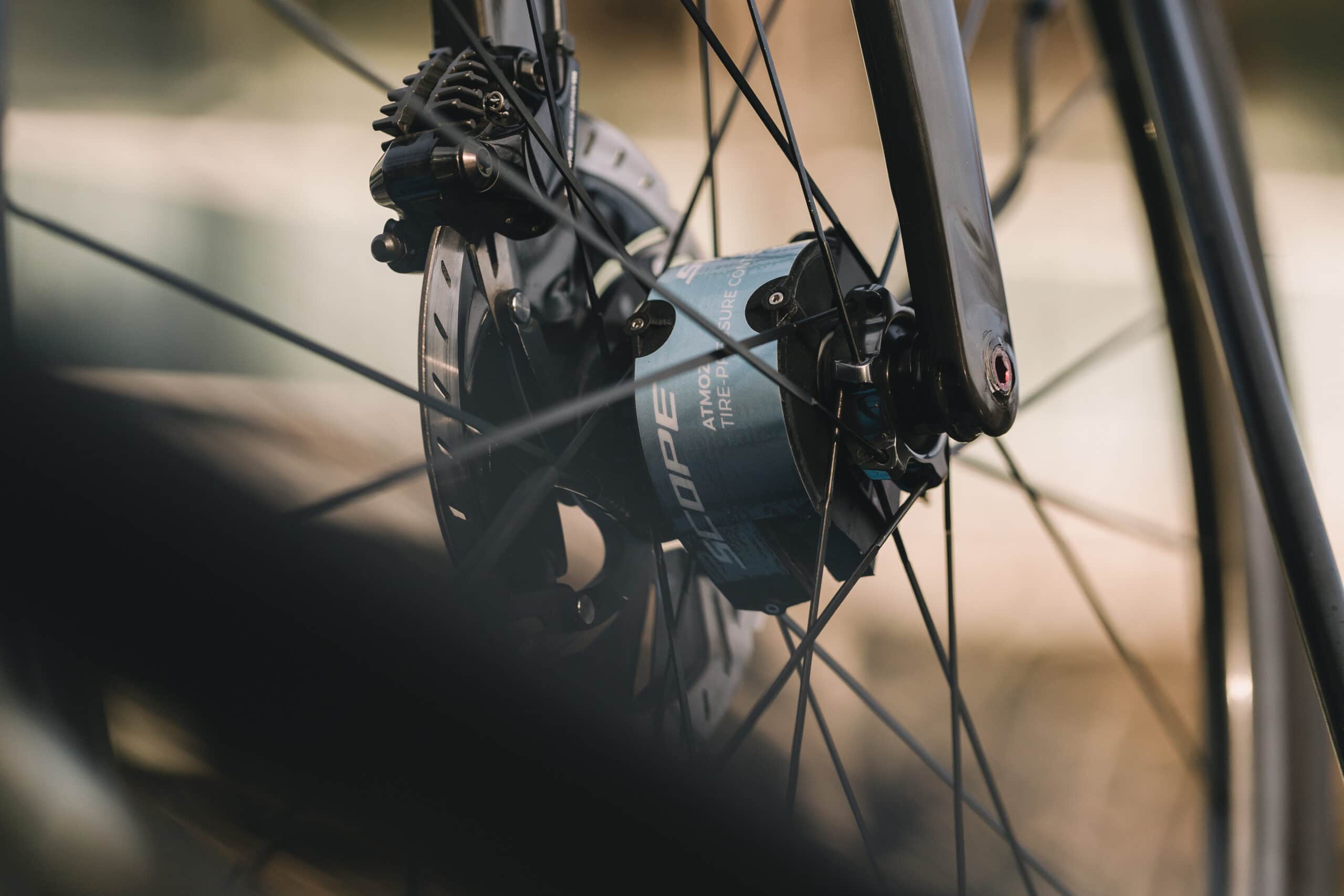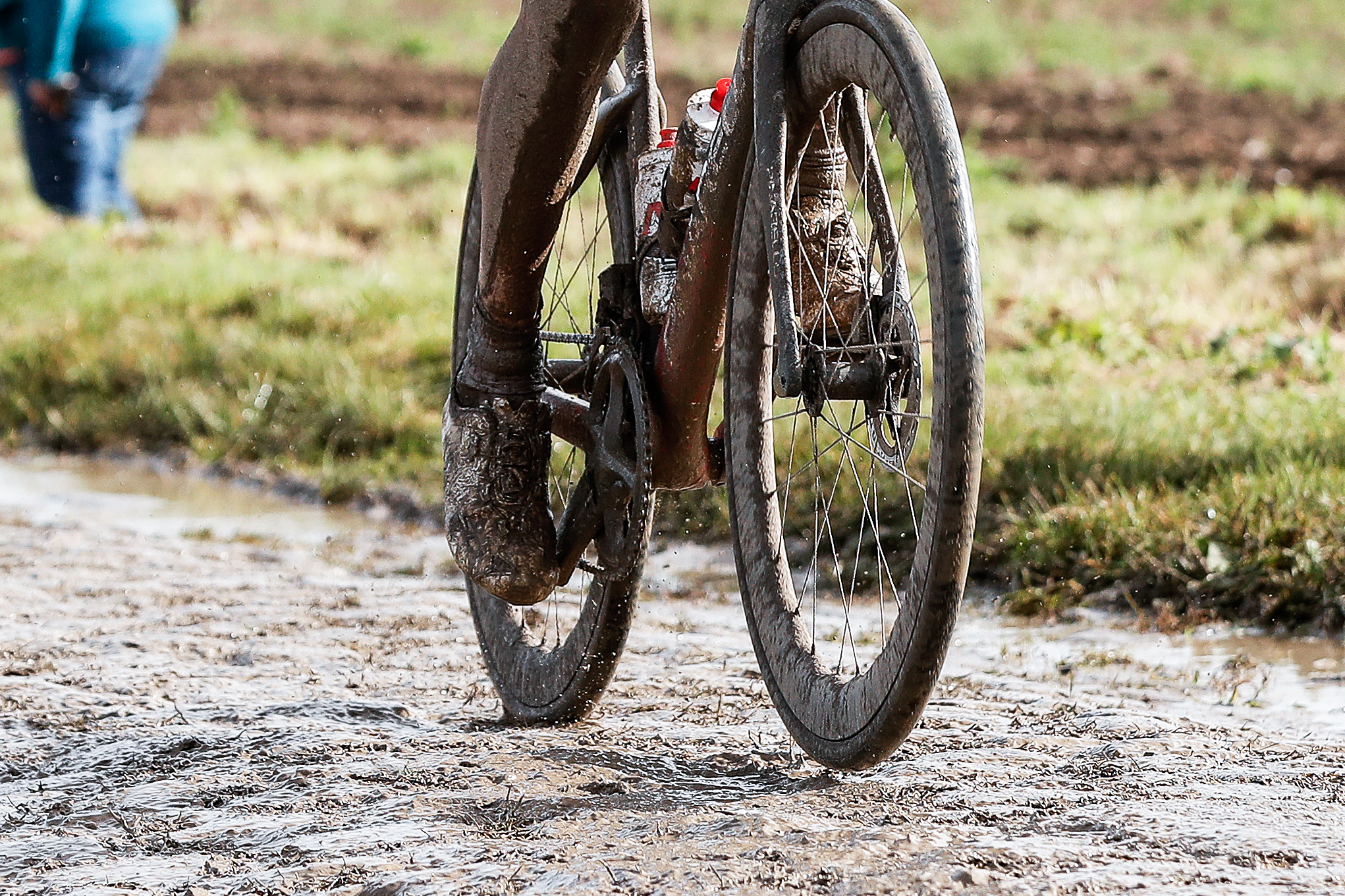In-race tyre pressure 'management system' to be used at Paris-Roubaix by Team DSM
Two years in development, the €3k Scope Atmoz will allow riders to adjust tyre pressure while riding

Team DSM have confirmed that its riders will be using built-in management systems for tyre pressure at Paris-Roubaix, meaning riders will be able to adjust pressure from controls on their handlebars during the course of the race.
Earlier today the UCI officially authorised the technology, in a press release which confirmed that a specific product - the Scope Atmoz - will be permitted in road racing.
Dutch company Scope developed the technology, in collaboration with Team DSM, to allow riders to adjust their tyre pressure motion while riding, both inflating and deflating pressure.
This is done using an air reservoir housed within the hub, which is then linked via mechanical valves and a hose to the rim, and tubeless tyre. Via controls on the handlebar, tyre pressure can be controlled electronically, and tracked in real time directly from a bike computer.
“Authorised in line with article 1.3.004 of the UCI Regulations, the tyre pressure management system is controlled by buttons on the handlebar and uses mechanical valves to regulate airflow between the air reservoir and the tubeless tyre,” the UCI release reads. “The system does not alter the structural integrity of the wheelset and does not contain any moving parts or compressors.”
Following the release, Cyclingnews initially contacted UCI innovation manager Michael Rogers to confirm the adoption of the new technology in racing. He replied, "Yes, it’s the real deal."
Nieck Busser from Scope Cycling later told Cyclingnews, "It's a great innovation on which we have been working on for the last couple of years. We believe this will make a huge impact in today’s cycling and create a significant increase of marginal gains."
Cyclingnews also learned that Team DSM intend to use the technology at Paris-Roubaix this weekend, and will be officially unveiling their new system to the public on Friday.
The system would likely add some weight to the hub and rim. However, there would be substantial gains in rolling resistance in a mixed terrain event such as Paris-Roubaix. Riders typically run low pressures to best suit the savage cobbled sectors - last year Lizzie Deignan ran her tyres at only 33 psi.

If a rider could then flip back up to a higher pressure for Tarmac sections of the race, this would offer substantial gains in rolling resistance: “up to 30 wattage of reduced rolling resistance”, claims Scope’s product page.
Get The Leadout Newsletter
The latest race content, interviews, features, reviews and expert buying guides, direct to your inbox!
In line with UCI rule 1.3.006, in order to be used in professional racing the system must be commercially available to recreational riders. Scope currently lists the Scope Atmoz wheel for sale at a price of €3,304 on its website.
A similar system was launched by Gravaa last year, targeting the gravel bike and mountain bike sector, and White Crow launched a more mechanical solution in 2015.
Cyclingnews reached out to several teams and bike brands to discuss the technology, with some saying they had experimented with the concept after last year's rain-soaked Paris-Roubaix but were not convinced by the overall gains in such a race.
Most teams and brands are focused on the aerodynamics of their bikes and the benefits of tubeless tyre set-ups, preferring to avoid the risk of new technology at such a prestigious event like Paris-Roubaix. Should it prove successful at Roubaix, though, we may see the technology adopted by more teams at the Tour de France this year, where stage 5 will take in 11 cobbled sectors.
The UCI rule follows Matej Mohorič's (Bahrain Victorious) innovative use of a dropper post at Milan San-Remo, where he argued that his equipment choice would become commonplace, “Now I think everyone will start to use dropper posts.”
Paris-Roubaix has historically been a hotbed of innovation in endurance cycling technology, with some new comfort features becoming mainstream, while others have quickly fallen out of fashion. We will be eager to see how adjustable tyre pressure may be used strategically in the race.
𝐂𝐥𝐚𝐬𝐬𝐢𝐟𝐢𝐞𝐝:Hi ████,█████ ███ ███ UCI approval - we can use our █████ ███████ █████! Game-changing.█ █████ ████ ██ see what everyone thinks ██ ███ documentary...#KeepChallenging #TrulyTogether pic.twitter.com/SUX4Kc3GjOApril 12, 2022

Peter Stuart has been the editor of Cyclingnews since March 2022, overseeing editorial output across all of Cyclingnews' digital touchpoints.
Before joining Cyclingnews, Peter was the digital editor of Rouleur magazine. Starting life as a freelance feature writer, with bylines in The Times and The Telegraph, he first entered cycling journalism in 2012, joining Cyclist magazine as staff writer. Peter has a background as an international rower, representing Great Britain at Under-23 level and at the Junior Rowing World Championships.
- Stephen FarrandHead of News